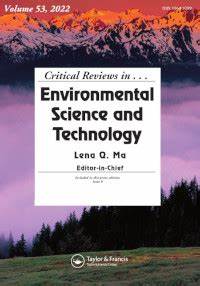水生环境中的抗癫痫药物:发生、毒性、转化机制和命运
IF 11.4
1区 环境科学与生态学
Q1 ENVIRONMENTAL SCIENCES
Critical Reviews in Environmental Science and Technology
Pub Date : 2023-05-11
DOI:10.1080/10643389.2023.2209010
引用次数: 3
摘要
摘要随着抗癫痫药物消费量的增加,抗癫痫药物在水生环境中广泛存在,对人类健康和水生生物造成了严重威胁。然而,目前还缺乏一篇综述为未来的学者提供基础数据和研究方向。本文根据已有文献,对AEDs及其代谢物/转化产物在水生环境中的毒性、分析方法、浓度、转化机制和命运进行了综述。AEDs及其代谢物/转化产物广泛存在于地表水、地下水和饮用水中,浓度在ng L−1-μ L−1之间。与环境相关浓度的aed对水生生态系统产生了影响,部分aed通常会对某些水生生物的抗氧化能力造成损害。在人体、微生物和水处理过程中,抗氧药物的转化始终是向氧化方向进行的,羟基化和酮化产物是三种途径的传导目标,并观察到转化途径的差异。AEDs的化学性质决定了其在水相的浓度分布比在沉积物相的浓度分布更占优势。此外,在接收水体的光解过程是aed的主要过程。同时,也指出了目前aed研究的不足。主要表现在对aed及其代谢物/转化产物的毒性数据不充分,转化途径不完整,低估了其环境危害。最后,文章还指出应将机理分析与非目标分析相结合,重视转化产物的识别。图形抽象本文章由计算机程序翻译,如有差异,请以英文原文为准。
Antiepileptic drugs in aquatic environments: Occurrence, toxicity, transformation mechanisms and fate
Abstract The increasing consumption of antiepileptic drugs (AEDs) has led to their widespread presence in aquatic environments, which poses a serious threat to human health and aquatic organisms. However, there is currently lack of a review to provide basic data and research directions for future scholars. This article was carried out to summarize toxicity, analytical methods, concentrations, transformation mechanisms and fate of AEDs and their metabolites/transformation products in aquatic environments according to existing literature. AEDs and their metabolites/transformation products were widely found in surface water, groundwater and drinking water with concentrations from ng L−1-μg L−1. AEDs at environmentally relevant concentrations have affected aquatic ecosystem, and partial AEDs could commonly cause the damage of antioxidant capacity for some aquatic organisms. The transformation of AEDs was always in the direction of oxidation, and hydroxylated and ketonizated products were conductive objectives in three pathways including human body, microorganisms and water treatment processes as the difference of transformation pathways was also observed. AEDs were supposed to dominate the concentration distribution in water phase than in sediment phase due to their chemical properties. Furthermore, photolysis was a main process for AEDs in the photic zone of receiving waters. Meanwhile, the current deficiencies of AEDs research are also pointed out. It is mainly reflected in the insufficient toxicity data and incomplete transformation pathways of AEDs and their metabolites/transformation products, which will underestimate their environmental hazards. Finally, the article also pointed out that more attention should be paid to identifying transformation products combining mechanisms analysis with nontarget analysis. Graphical Abstract
求助全文
通过发布文献求助,成功后即可免费获取论文全文。
去求助
来源期刊
CiteScore
27.30
自引率
1.60%
发文量
64
审稿时长
2 months
期刊介绍:
Two of the most pressing global challenges of our era involve understanding and addressing the multitude of environmental problems we face. In order to tackle them effectively, it is essential to devise logical strategies and methods for their control. Critical Reviews in Environmental Science and Technology serves as a valuable international platform for the comprehensive assessment of current knowledge across a wide range of environmental science topics.
Environmental science is a field that encompasses the intricate and fluid interactions between various scientific disciplines. These include earth and agricultural sciences, chemistry, biology, medicine, and engineering. Furthermore, new disciplines such as environmental toxicology and risk assessment have emerged in response to the increasing complexity of environmental challenges.
The purpose of Critical Reviews in Environmental Science and Technology is to provide a space for critical analysis and evaluation of existing knowledge in environmental science. By doing so, it encourages the advancement of our understanding and the development of effective solutions. This journal plays a crucial role in fostering international cooperation and collaboration in addressing the pressing environmental issues of our time.

 求助内容:
求助内容: 应助结果提醒方式:
应助结果提醒方式:


